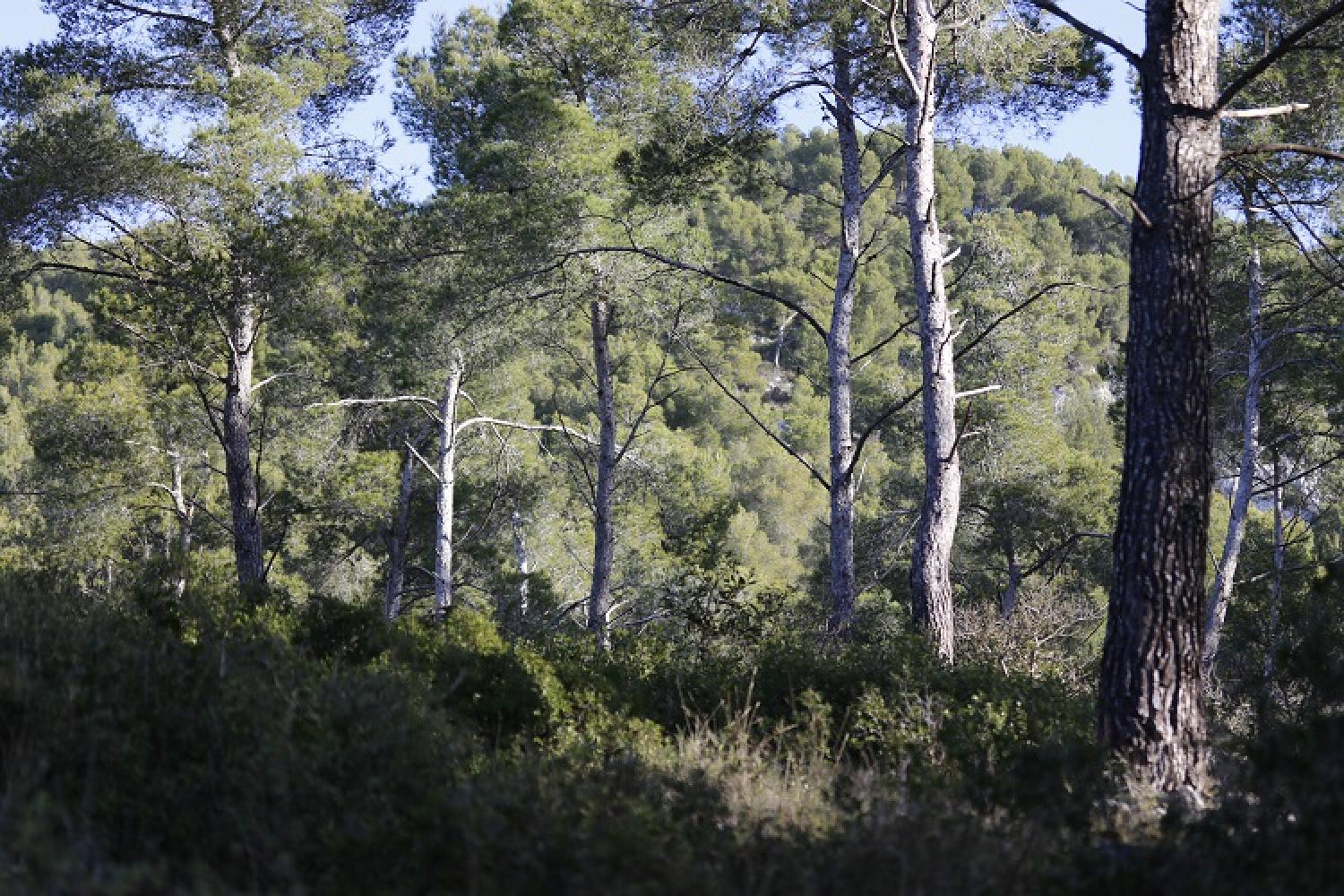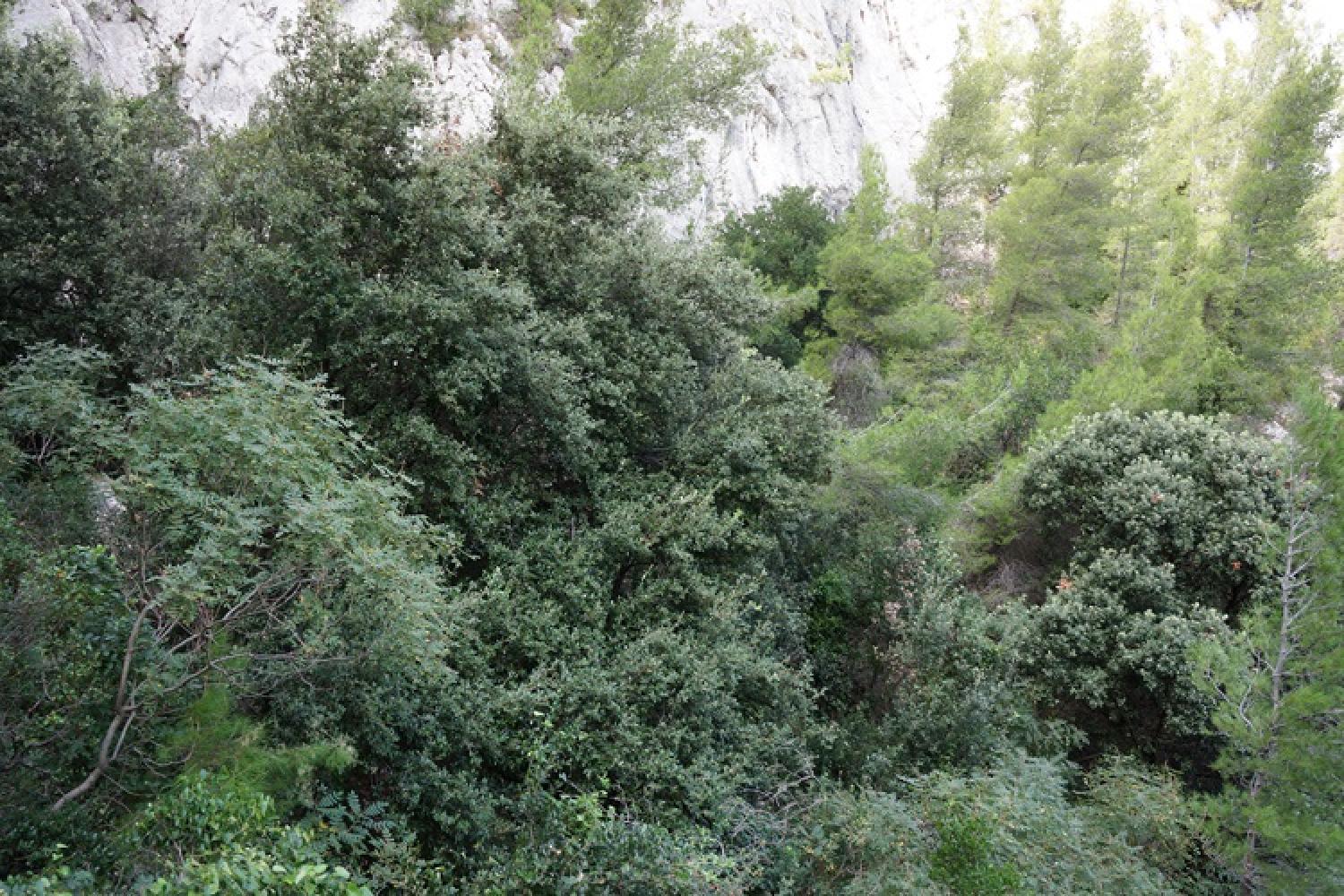Description
Two main types of forest formations can be found in the National Park:
- Pine forests essentially comprised of mature trees and undergrowth made up of a few bushes or small Mediterranean deciduous trees, such as the Mediterranean buckthorn (Rhamnus alaternus) or the Narrow-leaved mock privet (Phillyrea angustifolia). The most commonly found plant species is the Aleppo pine tree (Pinus Aleppoensis). In contrast there is very little or even no herbaceous layer. The pine forests are found by the coast and in rocky areas. They also occupy vast areas inland where they developed in an opportunistic way on land left bare when human activities ceased (farming, wood harvesting, etc.) and after fires.
- The green oak forest dominated by the Holly oak (Quercus ilex), is a dense mass with sparse undergrowth. The forest is dominated by the Holly oak and its companion plants such as the Common wild madder (Rubia preregrina) or Butcher’s broom (Ruscus aculeatus). This type of forest develops in cool valleys, with a northern exposure, at the foot of shady cliffs and sometimes on cliff tops.
Main associated species
- Butcher’s broom (Ruscus aculeatus)
- Common smilax (Smilax aspera)
- Virburnum tinus
- Downy or pubescent oak (Quercus pubscens)
- Holly oak (Quercus ilex)
- Aleppo pine (Pinus hAleppoensis)
Did you know?
The landscape has more forest cover today than a century ago. With the pasturing of goats and sheep as well as wood harvesting Calanques had a barer appearance.






